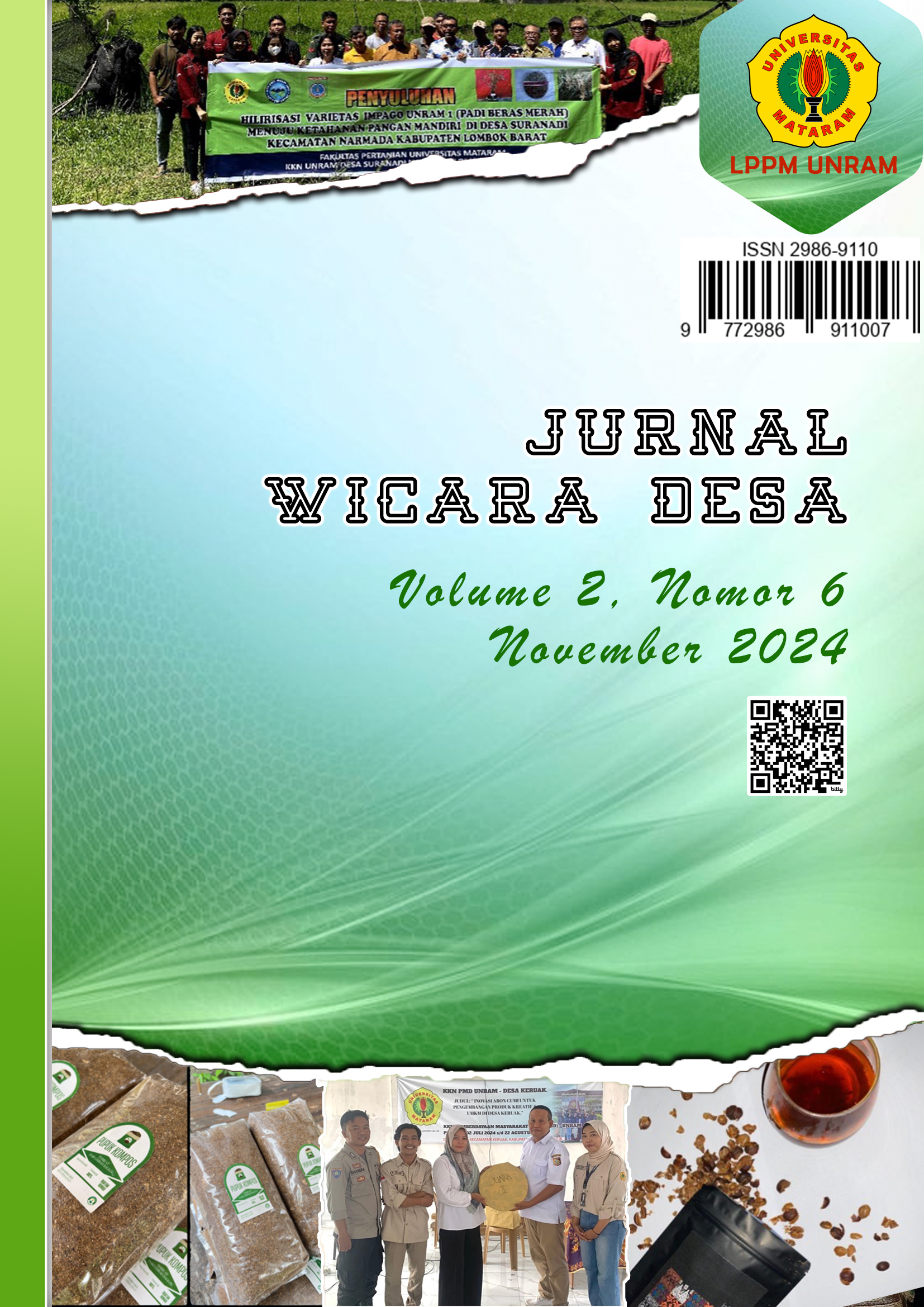PRACTICE AND COUNSELING ON PROCESSING MUSTARD GREENS INTO MUSTARD STICKS THAT HAVE HIGH ECONOMIC VALUE IN PAOK PAMPANG VILLAGE, SUKAMULIA DISTRICT
DOI:
https://doi.org/10.29303/wicara.v2i6.5588Keywords:
Paok Pampang Village, Counseling, Mustard sticksAbstract
Paok Pampang Village, established as a result of the division from Dasan Lekong Village in 2010, possesses abundant natural resources in agriculture, livestock, and plantations. Agriculture in this village produces various types of food crops and fruits, with green mustard (sawi) being the main commodity. Despite the abundant production of green mustard, its market value remains low due to a lack of product diversification. To enhance its value, an innovation was introduced by processing green mustard into a snack product called "stick sawi." The methods used in this activity include direct observation and conducting educational outreach. Observation is useful for understanding the post-harvest processing of green mustard. The results of this activity are expected to improve the welfare of the community by increasing the economic value and competitiveness of agricultural products in the market, thereby supporting the economic well-being of the people in Paok Pampang Village.
References
Majid, Nurkholish. (2022). Pemanfaatan Sawi Sebagai Produk Olahan Inovatif “Stik Sawi” Di Kelurahan Sentul, Kota Blitar. Jurnal Penyuluhan dan Pemberdayaan Masyarakat 1.3. 57-61.
Aditya, Robby, and R. Yuniardi Rusdianto. (2023) Penerapan Digital Marketing Sebagai Strategi Pemasaran UMKM. Jurnal Pelayanan Dan Pengabdian Masyarakat Indonesia 2.2. 96-102.
Novianti, Maria Evi. (2019). Perbandingan Kadar Besi (Fe) Pada Sawi Putih Dengan Sawi Hijauyang Dijual Dibeberapa Pasar Kabupaten Brebes. Publicitas Ak 1.1.
Alifah, Siti, Anita Nurfida, and Aditya Hermawan. (2019). Pengolahan sawi hijau menjadi mie hijau yang memiliki nilai ekonomis tinggi di Desa Sukamanis Kecamatan Kadudampit Kabupaten Sukabumi." Journal of Empowerment Community 1.2. 52-58.






